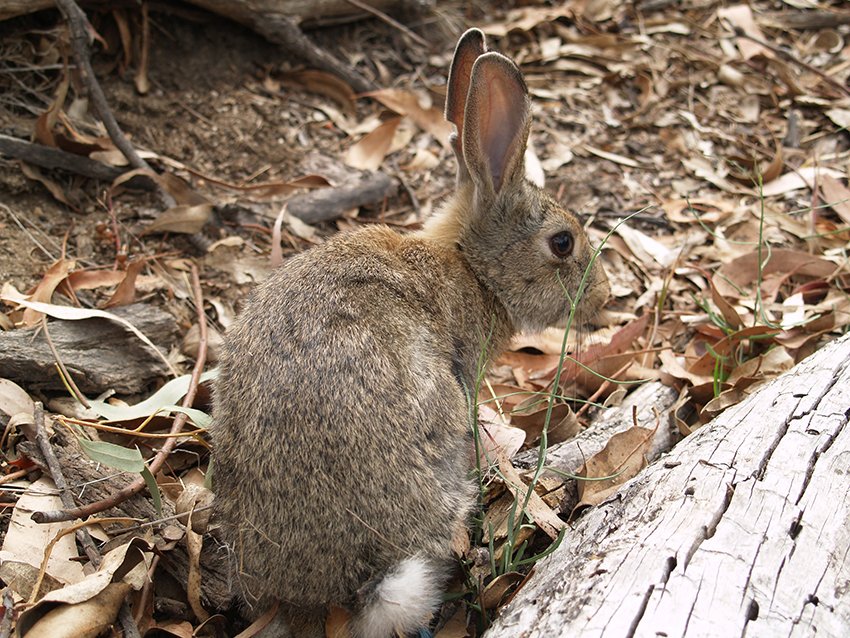What Impact Do Rabbits Have on the Environment

Rabbits are considered to be one of the main pests in Australia. They compete with native wildlife for food and shelter, damage crops and spread disease. Rabbits also contribute to soil erosion through their burrowing activities.
Rabbits are often considered to be a nuisance animal, but they can actually have a positive impact on the environment. Here are a few ways that rabbits help out:
1. Rabbits are great at aerating soil.
Their furry little bodies and constant digging help to loosen up compacted earth, making it easier for water and nutrients to penetrate the ground. This is especially beneficial in areas where the soil has been damaged by human activity or natural disasters.
2. By eating plants, rabbits help to control vegetation growth.
This can prevent wildfires from spreading out of control, and it can also improve the health of forests and other ecosystems by allowing sunlight and rain to reach the ground more easily.
3. Rabbits provide food for other animals. Many predators (including humans) see rabbits as a tasty treat, so they help to keep populations of these animals in check.
Why are Rabbits Important to the Environment
Rabbits play an important role in the environment. As they graze, they help to keep grasslands healthy and prevent them from becoming overgrown. This benefits both the rabbits and the other animals that live in these areas.
Rabbits also provide food for predators such as foxes, weasels, and birds of prey. By keeping the population of rabbits under control, these predators are also able to stay healthy and maintain a balanced ecosystem.
How Do Rabbits Affect the Environment in Australia
Rabbits are one of the most widespread and damaging environmental pests in Australia. They occupy all habitats except tropical rainforests, alpine areas and deserts, and their impact is greatest on native grasslands, heathlands and woodlands.
Rabbits compete with native animals for food and shelter, and can also transmit diseases to them.
They eat a wide range of plant species, causing damage to crops, pastures and natural ecosystems. In some cases they strip the bark from trees, preventing regeneration. Their burrowing damages farm machinery, infrastructure such as roads and fences, as well as water courses and drainage systems.
The most effective way to control rabbits is through a combination of shooting, trapping and poisoning. However, these methods are often impractical or too expensive for many landholders. Biological control using the virus Myxoma virus offers a more sustainable solution that can be tailored to specific local conditions.
How Do Humans Affect Rabbits
Rabbits are very sensitive creatures and can be easily scared or even killed by humans. It is important to always approach a rabbit calmly and quietly, as sudden movements or loud noises can startle them. When picking up a rabbit, it is important to support their hindquarters to avoid injury.
Rabbits are also very social creatures and enjoy spending time with other rabbits and humans. However, they can also become stressed if they are constantly handled or if there is too much noise and activity around them. It is important to provide rabbits with plenty of space to run and hide, as well as plenty of toys and chewable objects to keep them occupied.
European Rabbit Impact on Human Health
The European rabbit (Oryctolagus cuniculus) is a species of rabbit native to southwestern Europe (including Portugal, Spain and western France) and northwest Africa (including Morocco and Algeria). It has been introduced elsewhere, often with devastating effects on local biodiversity. In Australia, for example, it is considered one of the most significant threats to indigenous fauna.
Rabbits are known to carry a number of diseases that can be transmitted to humans. These include Tularemia (also known as “rabbit fever”), Cryptococcosis and Salmonellosis. Rabbits can also act as hosts for a number of parasites, including fleas, ticks and mites, which can in turn transmit diseases to humans.
Tularemia is caused by the bacterium Francisella tularensis and is potentially fatal if not treated promptly with antibiotics. Symptoms include fever, chills, headaches, muscle aches and joint pain. In severe cases, pneumonia or meningitis may develop.
The disease is usually transmitted through contact with infected rabbits or their tissues (e.g., during hunting or skinning). It can also be contracted via bites from infected fleas or ticks.
Cryptococcosis is caused by the fungus Cryptococcus neoformans and primarily affects people with weakened immune systems (such as those with HIV/AIDS or cancer).
Symptoms include fever, cough, chest pain and shortness of breath. The disease can progress to meningitis (inflammation of the brain), which can be fatal if not treated promptly with antifungal medication. Rabbits are thought to be the main reservoir for this infection in Europe; however direct transmission from rabbits to humans is rare.
Most human infections are believed to occur via inhalation of fungal spores from contaminated soil or straw bedding material used in rabbit hutches/cages .
+
In conclusion, while rabbits may seem like harmless creatures, they can actually pose a serious threat to human health due to the diseases they carry .
It’s important to take precautions when handling rabbits or their products , such as wearing gloves when skinning them ,to avoid contracting any illnesses .
How Did Rabbits Get to Australia
In 1859, Thomas Austin imported 24 rabbits from England to his property in Victoria, Australia. He released them for hunting purposes, but the animals quickly multiplied and spread throughout the continent. By 1900, there were an estimated 10 million rabbits in Australia.
Today, that number has exploded to an estimated 200 million rabbits!
Rabbits are now considered one of the worst invasive species in Australia. They compete with native wildlife for food and habitat, and their burrowing habits damage crops and infrastructure.
In some areas, rabbits have caused such extensive environmental damage that they are now subject to government-sponsored culling programs.
It’s amazing how such a small creature can cause so much trouble! But next time you’re feeling bad about a mistake you’ve made, just remember: it could be worse…you could have introduced millions of rabbits to an entire continent!

Credit: bunnylady.com
How Do Rabbits Help the Earth?
Rabbits play an important role in many ecosystems. They are prey for predators, help disperse seeds, and their burrowing habits aerate the soil.
Rabbits are a keystone species in many ecosystems.
This means that they have a disproportionately large effect on their environment relative to their abundance. As such, rabbits play an important role in maintaining ecosystem health.
One of the ways that rabbits impact their ecosystem is through predation pressure.
By being eaten by predators like foxes, coyotes, and hawks, rabbits help keep these animals healthy and fit. In turn, these predators help keep populations of smaller animals in check, preventing them from becoming overabundant and damaging their habitat through overgrazing or other means.
Another way that rabbits benefit their ecosystem is by dispersing seeds.
When rabbits eat fruits and vegetables, the seeds pass through their digestive system unharmed. These seeds are then deposited in rabbit droppings elsewhere, leading to new plants sprouting up around the landscape. This helps maintain genetic diversity among plant populations and can also help prevent soil erosion due to lack of vegetation cover.
Lastly, rabbits’ burrowing habits aerate the soil and help improve its drainage and fertility. The holes that rabbits dig allow water to seep down into lower layers of soil where roots can access it more easily. Additionally, the mixing of different layers of soil caused by burrowing gives plants better access to a variety of nutrients needed for growth.
Why are Rabbits Considered a Problem?
There are a number of reasons why rabbits may be considered a problem. In agricultural settings, they can cause significant damage to crops. They are also known to carry a number of diseases that can affect both humans and other animals.
Additionally, their burrowing habits can lead to problems with property damage.
What Damage Do Rabbits Cause?
Rabbits are one of the most popular pets in the world. They are cute, cuddly and relatively low maintenance. However, rabbits can also cause a significant amount of damage if they are not properly cared for.
Rabbits have very sharp teeth that they use to gnaw on things. This includes wood, plastic, wires and even drywall. If your rabbit is not provided with enough chew toys or other outlets for their chewing habits, they will likely start chewing on your belongings – which can quickly add up to a lot of damage.
In addition to chewing, rabbits also like to dig – both in the wild and in your home. If you have a rabbit that is allowed to roam freely around your house, chances are good that they will dig holes in your carpet or furniture. And if you have an outdoor rabbit, they may escape their enclosure by digging under it.
Either way, rabbits can cause serious damage with their digging habits.
Finally, rabbits are known for being quite messy creatures. They tend to urinate and defecate frequently, which can quickly lead to stains and bad smells if not cleaned up properly (and often).
Additionally, rabbits shed a lot of fur – which can also lead to messes and allergies for some people (including yourself).
Is Rabbit an Eco Friendly Animal?
Rabbits are considered eco friendly animals for several reasons. For one, they have a very efficient digestive system that allows them to convert a large percentage of the food they eat into nutrients that can be used by plants. Additionally, rabbits reproduce quickly and easily, meaning they can help replenish populations of other animals that may be struggling.
Finally, rabbits are relatively low-maintenance creatures, requiring little in the way of resources to care for them. All of these factors make rabbits good candidates for sustainable farming practices.
Environmental impacts of Rabbits
Do Rabbits Stand on Their Hind Legs as a Defensive or Aggressive Behavior?
Do rabbits stand on their hind legs as a defensive or aggressive behavior? The rabbit standing on hind legs symbolism is intriguing and often misunderstood. It is their way of assessing their surroundings for potential threats or displaying dominance. This unique behavior showcases their agility and adaptability, allowing them to defend themselves or assert their dominance when necessary.
Conclusion
Rabbits are often considered to be a pest, but they can actually have a positive impact on the environment. They help to aerate and fertilize the soil, which helps plants to grow. They also eat weeds, which can help to control the spread of invasive plant species.
In addition, rabbits provide food for other animals, such as foxes and birds of prey.
